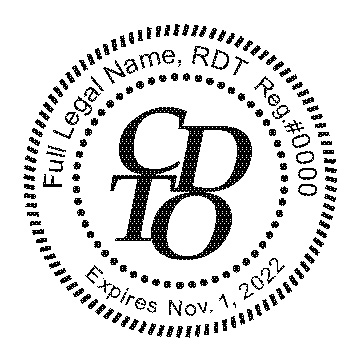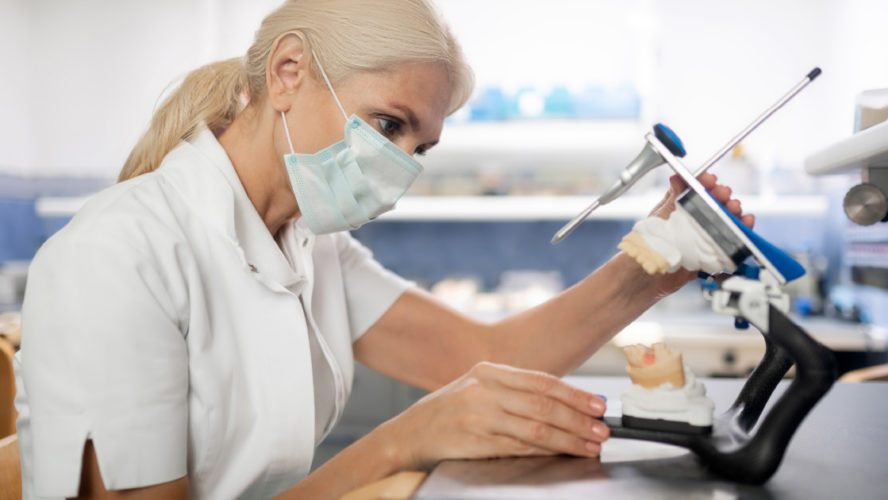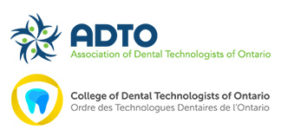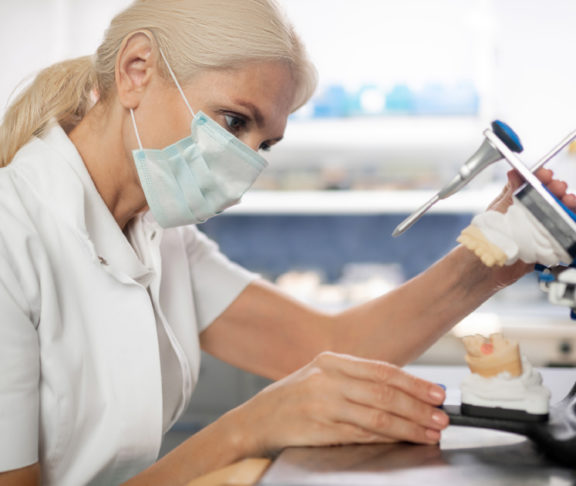Devoted to oral health and giving you peace of mind, Ontario’s Registered Dental Technologists stand behind every dental device they create
Did you know that your dentist relies on the technical and creative mastery of a registered dental technologist (RDT) to improve and maintain your beautiful smile? When you or your family members need a dental device, such as a crown or denture, your dentist collaborates with an RDT to design and create it. An RDT’s expertise is vital in ensuring that the device meets your unique needs.
RDTs are distinguished by strict qualifications, experience, and licensing requirements and are regulated by a regulatory body in Ontario. They also have an association that advances and encourages excellence in dental technology. Woven together, they represent a dedicated group focused on a patient’s oral health, which is one of the cornerstones of overall health.
The true value of an RDT: professionalism and high standards
Dentists seek out licensed dental technologists because they’ve worked hard to obtain the RDT designation and the right to apply the RDT Stamp. These convey an RDT’s commitment to delivering professionalism and high standards. RDTs are a great asset to dentists in planning out cases to create an optimal treatment plan for the patient. They provide the dentist with technical solutions, material choices, and timelines that prioritize the unique needs of the patient.
Creating the final dental device is in the trusted hands of the RDT. The device must imitate or improve the beauty and function of the patient’s natural dentition, and be in harmony with the rest of the system. To achieve this, RDTs use their creative mastery and deep foundational knowledge of oral structures. They stay current with rapidly-advancing science and are at the forefront of new dental technology. This ensures that the safest materials are used and the device has improved quality, which benefits the patient.
It’s your right to be informed about who will make your dental device, from mouthguards to bridges. It’s your right to demand that an RDT is involved in the design and creation. This starts with a conversation with your dentist.

Be informed, be part of the decision, and know your rights
You’re your own best advocate when it comes to your oral health. Dental devices not only provide confidence, they also provide life functions as critical as eating. Some dental devices, such as crowns, remain in your mouth for years and even decades. Proper choice of materials ensures that toxins won’t leach into your body. Nearby teeth can also be damaged when a crown is poorly designed.
As a patient, you have a number of important rights when it comes to your dental device. You have the right to ask questions about your treatment plan. You have the right to expect that your dental device will be safe and made of the right materials. You have the right to request that an RDT be involved in your care and you have the right to verify it.
The RDT Stamp is a distinguishing mark of the profession. It signifies commitment to standards of care and excellence. The Stamp is impressed on any document that authorizes the release of a case, such as laboratory invoices. You have the right to ask your dentist for a copy to verify if it has an RDT Stamp impressed on it. You have the right to expect peace of mind that an RDT is responsible and accountable.
True professionals held accountable
Regulation is one of the main reasons that dentists and patients seek RDTs. It means that an RDT has met strict qualifications and will always be up to date with the practice environment. RDTs are regulated by the College of Dental Technologists of Ontario (CDTO), whose mandate is to act in the public interest by putting patients first.
Regulation provides assurance to the public that they’re dealing with true professionals who can be held accountable for their actions. A complaint can be filed with the CDTO if anyone feels that their RDT has not met the standard of care. The CDTO will investigate the matter in a transparent and timely manner, and take appropriate action.
Patients and dentists can access a searchable Public Register to verify that an RDT is registered and able to practice and supervise. Details such as the RDT’s name, registration number, place of practice, and current status are displayed. Learn more about the CDTO by visiting cdto.ca.
RDTs are supported by the Association of Dental Technologists of Ontario (ADTO), whose mission is to advance the profession on behalf of its members. It provides members with professional development opportunities to improve the care that patients receive. The ADTO also provides professional liability insurance, which compensates patients who have been harmed by malpractice or negligence by a professional. Click here to learn more.
Remember its your mouth and your smile!
As regulated oral health professionals, RDTs act professionally and put a patient’s health and safety first. For patients, the RDT’s designation and Stamp are assurance that you can trust the quality of the device needed to improve and maintain a healthy smile. For dentists, the RDT is a trusted oral health partner.
It’s your right to be informed about who will make your dental device, from mouthguards to bridges. It’s your right to demand that an RDT be involved in the design and creation. This starts with a conversation with your dentist. Make it clear that you want an RDT working on your dental devices.




